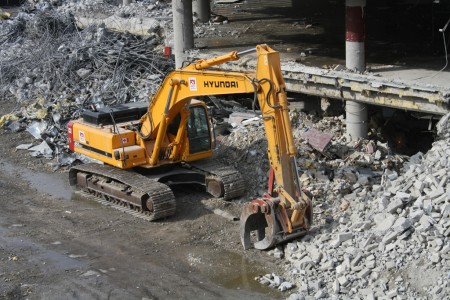
Some threats to society strike people as so severe they justify employing large numbers of people, at taxpayer expense, to mitigate them. Chief among these is probably the danger that foreigners will try to kill us. Largely to combat this, Canadians pay for 65,251 active military personnel and 24,300 reservists. We also contribute a bit more than 1% of our gross domestic product.
At best, the operation of these institutions will leave us as well off as we are now. The money spent on bombs and military vehicles is primarily expended so as to minimize the risks associated with being attacked (though domestic industry and humanitarian concern are also factors).
Now consider climate change: probably the greatest threat facing humanity in the foreseeable future. I can’t tell you exactly how many taxpayer-funded agents are working on the problem, but it is certainly a very small fraction of the armed forces total. Should that number not be increased, so as to bring the allocation of resources more closely in line with the suite of threats we face? The case becomes even stronger when you recognize that climate change workers (say, people performing free building retrofits) have all the advantages of soldiers, plus additional benefits. Climate change mitigation is a humanitarian activity – the faster we bring emissions down to a sustainable level, the less suffering will occur in future generations worldwide due to the effects of climate change. Climate change mitigation and adaptation can have domestic economic benefits: not only do efficient buildings have lower year-on-year costs for heating, cooling, and lighting but they may also make those who live and work in them happier and more productive.
The idea of employing, say, 10% as many people to fight climate change as to fight foreigners is not entirely unproblematic. Providing free retrofits might undercut the businesses that perform such operations for profit now. That being said, I am sure careful policy design could minimize such problems. The biggest hurdle to overcome is the psychological block between facing the threat of climate change and employing people to combat it. Actually, rather than a block it might be more accurately referred to as the absence of a connection, between where our likely societal problems lie and where our societal resources are being directed.
Admittedly, you could achieve many of the same outcomes through market liberal climate strategies, such as carbon taxes and cap-and-trade schemes. The potential advantage of doing it through government labour is that the market liberal policies are hard to implement: firms often oppose them tooth-and-nail and convince voters that they will cause economic harm to them personally. Given the strength of entrenched interests, it would take remarkable political will to deploy the kind of market mechanism that would produce the required change at an acceptable pace.
Some outstanding questions jump to mind. Would a public climate change service be sensible or useful? What would such a service do? How could unfair competition with the private sector be addressed? Is there a politically feasible way to achieve the same outcomes with fewer problems or lower costs? All of these seem worth debating.
Note also that if you extend the 10% logic to the United States and China, you are talking about huge numbers of mitigation workers. The American armed forces comprise about 1.5 million people, with that many again in reserves. The US spends more than 4% of GDP on them. China has 2.25 million active personnel and 800,000 reservists. They spend about 1.7% of their GDP on them.






